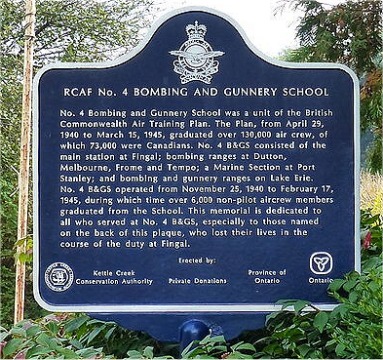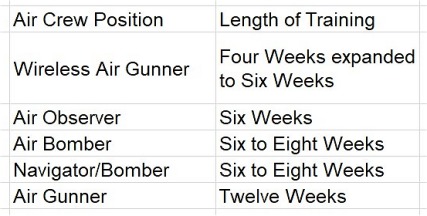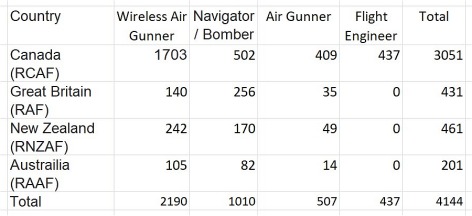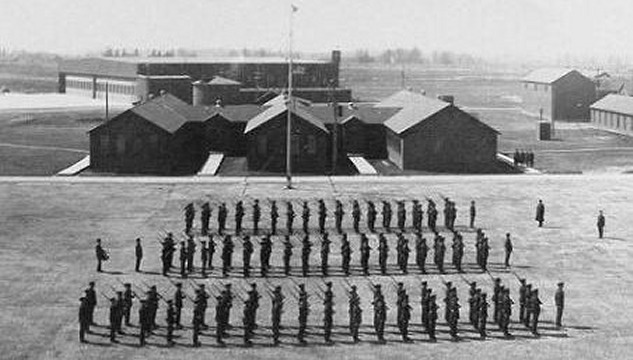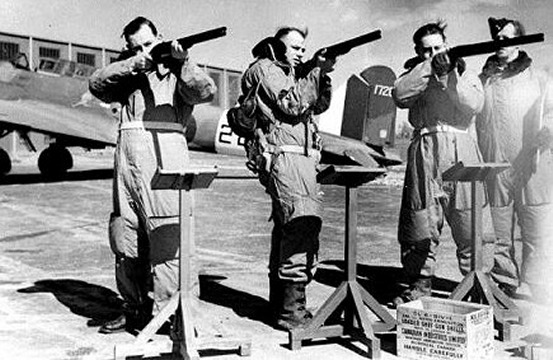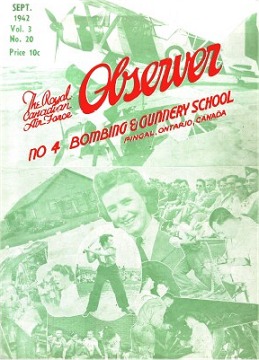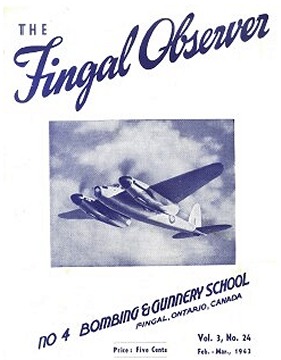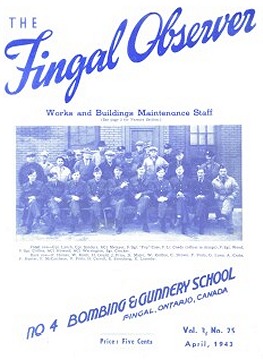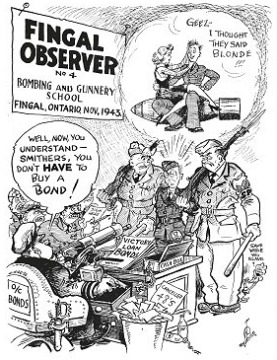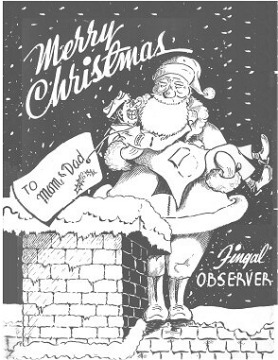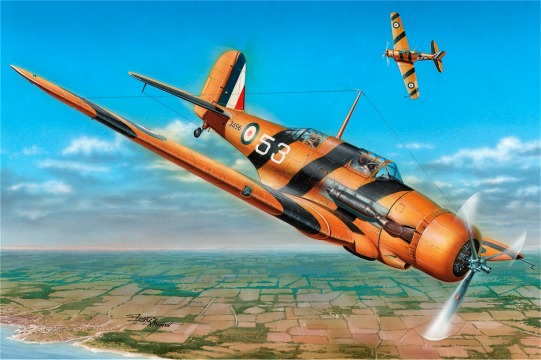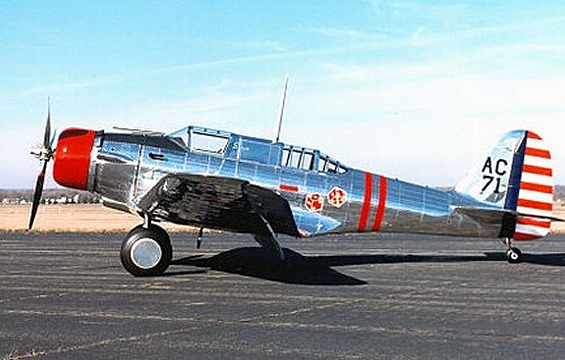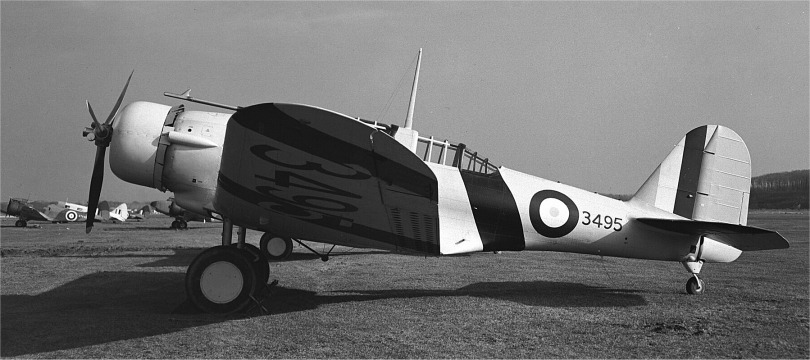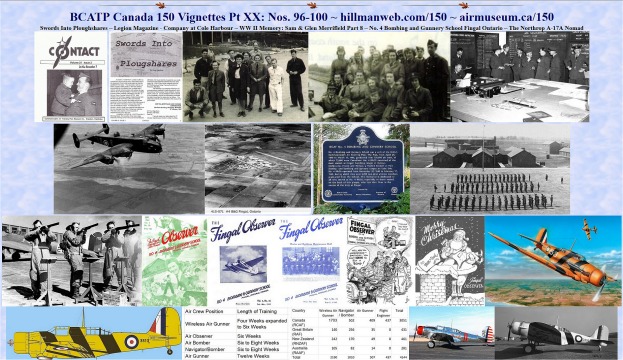097 of
150: Legion Magazine - Company at Cole Harbour
Company at Cole Harbour
by Mickey Stevens
Legion Magazine – September/October 1997
In September 1942, the Royal Canadian Air Force opened
No. 5 radar unit near Cole Harbour, N.S. There was a full complement of
36 men at the unit and most of us were either radar operators or radar
mechanics. I joined the services at Winnipeg in 1940 and worked at Cole
Harbour as a radar operator between the fall of 1942 and 1945; starting
out as a leading aircraftman and ending up as a sergeant. Situated on Tor
Bay, approximately 125 miles east of Halifax, the unit had been known as
No. 5 Queensport after the small community that's located six miles to
the north on Chedabucto Bay.
The unit's location on high ground north of Cole Harbour
wasn't exactly a hub of social activity That is why several of us participated
in some extra-curricular pursuits that mixed a little pleasure in with
our daily routines. During our six-hour work shifts, each member of our
four-man crews manned a communications headset for two 45- minute periods.
Our main purpose was to monitor our patrol aircraft, but radar could also
be used - in a limited way- to detect surfaced U-boats. The first order
of business when your shift began was to confirm there was somebody on
duty at Eastern Air Command Halifax to accept any coded aircraft tracking
information we wished to transmit to the filter centre. The filter centre
plotted information from the radar units and then fed the intelligence
to sector control rooms at the fighter aerodrome. The filter centre was
also where members of the RCAF Women's Division worked as operators.
Our radar station's 24-hour-a-day contact with Eastern
Air Command was never intended to be a licence for our radar operators
to operate a wartime dating service, but in the late and lonesome hours
of the night - when air traffic was light or sometimes non-existent – it
could get awfully boring to just sit there with a headset on and not try
to engage the young filter centre operator on the other end in conversation.
This, of course, depended on whether or not the WD at the other end was
plotting air traffic in another area or under the watchful eye of a no-nonsense
duty officer. It also depended on whether or not the filter room operator
was interested in you, or not yet bored enough to desire companionship
or casual conversation.
Of course, not all of our conversations with the filter
room operators were conquest motivated. Indeed, many of my fellow radar
operators were just passing the time because some had commitments back
home that they were honoring. For others, though, the name of the
game was to arrange a date and to that end some great lines were perfected
by my fellow operators at Cole Harbour.
I did not always hear the results of these meetings in
Halifax. but I know some of the dates resulted in great friendships, several
of which blossomed into love and marriage. Once in a while someone tried
to convince a filter room operator to visit Cole Harbour, but this proved
very difficult because some of our operators - in order to gain the sympathy
of a filter room operator - had exaggerated the isolation of our unit.
And so it seemed none of the women in the Halifax filter room wanted to
visit us at Cole Harbour.
We were pretty well resigned to the simple pleasure our
radio conversations could bring until one summer day in 1944 - almost two
years afler the first invitation to a filter room operator went out. Remarkably,
someone or some group of men at our unit succeeded in convincing a member
of the WDs to visit Cole Harbour. And so it came to pass that not one,
but 11 WDs from Eastern Air Command accepted an unofficial invitation.
Indeed, most of us were surprised when the women arrived – unannounced
- at the Monastery railway station some 65 miles from Cole Harbour. It
was late in the day and naturally all of the women expected transportation
in from the railway station.
It just so happened that our military transport driver,
Doug Barkhouse, was on a duty run into Mulgrave for our weekly rations
and supplies. He was told to swing by the railway station on his way back.
When he got there and saw the women, Barkhouse did the only thing
he could - he immediately telephoned us for further instructions.
The commanding officer at Cole Harbour was Flight-Lieutenant
Louis Monasch, a well-respected man who allowed us to perform our regular
duties without issuing a lot of orders. When he was blind-sided by the
news of our unexpected visitors, Monasch was anything but pleased. However,
when he was reminded that there was no return train to Halifax that day,
he knew he had a problem that would not go away immediately. He began by
asking Barkhouse a number of questions "Do they understand that there are
no facilities for WDs at Cole Harbour? Do they understand that they will
have to ride on the back of an open transport truck? Do they realize that
it is 65 miles to the radar unit, only 25 of which are paved?"
When all of this was understood by the WDs, the CO told
Barkhouse to bring them in. All trips in from the Monastery railway station
took a long time, but on that occasion none of the passengers resorted
to pounding on the roof of the driver's cab to denote it was time for a
pit stop. At the radar unit, the CO assigned men to remove the office equipment
and files from the administration room and establish a temporary quarters
for our unexpected guests.
When the transport truck pulled in around 11 p.m., the
room – complete with bunks and bedding - was ready. As the night progressed,
it became more and more obvious that the CO was not pleased with the situation.
There was very little doubt in anyone's mind that some radar operalor -
or perhaps several operators - were responsible for the invasion from Halifax.
The CO acted as though I knew who was behind it all, and he insisted that
it was up to me to determine who had been the instigator and then report
my findings to him.
Meanwhile, the women from Halifax were enjoying themselves
immensely. They were being treated like royalty, waited on hand and
foot. And much to the radio operators' pleasure and the CO's chagrin, a
closer look at the rail service schedule revealed it was not practical
to return the WDs to the railway station the next day. This meant the WDs
would have to stay over a second night before they could return to Halifax.
The following day, the usual boredom was replaced by face-to-face
conversations, card games and volley-ball matches with our guests. Our
CO, meanwhile, was careful enough to establish some ground rules. These
were hardly necessary, but we all followed them. After two days of fun,
the WDs were driven back over the long bumpy road to the railway station.
From there, they returned safely and on time to Halifax and their work
at the filter centre.
For some reason the women did not make a return trip to
Cole Harbour. I have often wondered why because the women were certainly
well treated while they were with us. My only guess is that it was the
thought of another journey on the back of our transport truck that kept
them away Our CO did not issue any order prohibiting a repeat visit, however,
he did not say we could do it again, either.
Aller the women left, I had hoped that the visit had been
so successfully completed that Monasch would relax and forget about his
instructions to me to find the instigator. No such luck. I was still expected
to produce the guilty party.
Quite high on my list of suspects were radar operators
Gordon Chisholme of Toronto and Bill King of Victoria. All I will say is
that they were logical suspects. Actually, they were on my list of suspects
even before I learned they were at Monastery railway station on day passes
when the train with the WDs arrived. The two of them sure knew something,
but it had not been their idea. My next suspect was radar operator AI Snow
of Montreal who was most conspicuous by his absence at certain times. Fortunately
or unfortunately, we never did learn who the instigator was.
When I got to know our CO a bit better, I realized that
his reason for wanting to know had changed. This switch came about when
he realized the visit had actually been handled rather well and that he
had not been left with any problems. Monasch no longer wished to reprimand
the guilty party; all he wanted to do was know the guy who had so much
moxie. But even then I could not tell him who it had been. Mere suspicions
do not count.
Editor's note: By 1945 there were 22 radar stations on
the East Coast for early warning and ground control. These units were immensely
valuable in locating friendly aircraft that were lost or in distress notes
W A.B. Douglas in The Creation of a National Air Force: The Official History
of the Royal Canadian Air Force Volume 11. The range at which flights could
be tracked was extended by Identification Friend or Foe equipment first
used by Eastern Air Command aircraft in 1943 The IFF equipment responded
to signals from equipment at radar stations, and could also transmit a
specially coded signal if the aircraft were in distress.
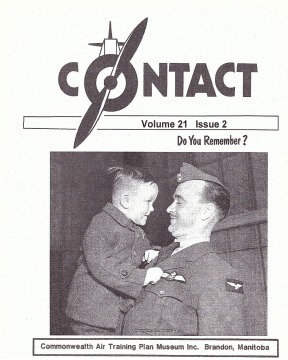 .
.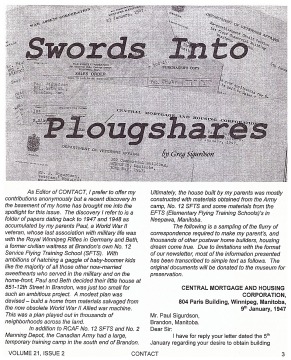 .
.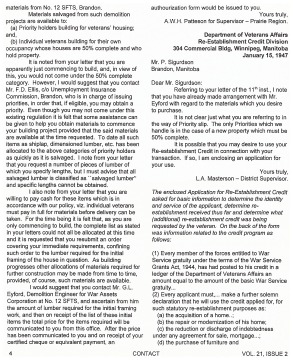 .
.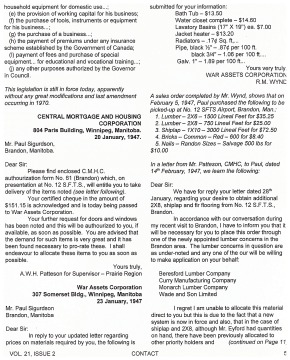 .
.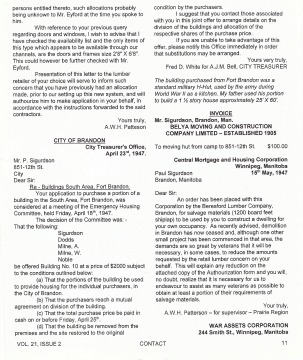 .
.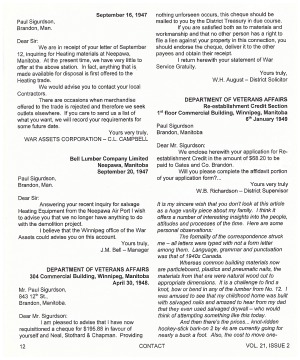 .
.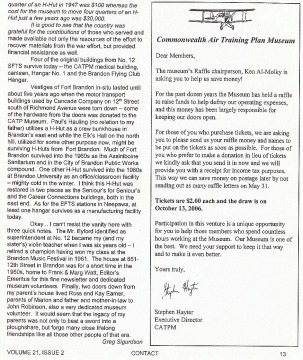
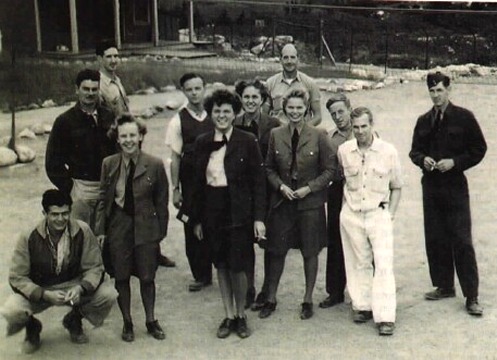
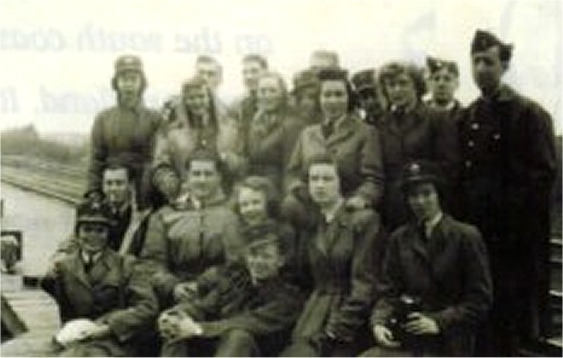
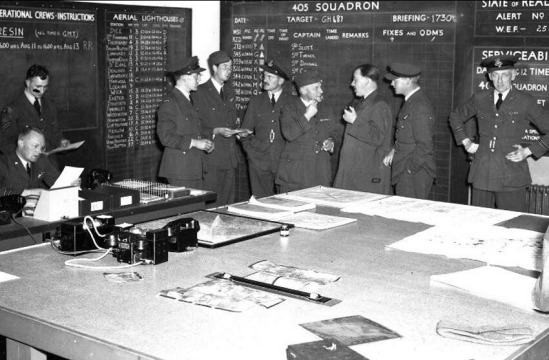
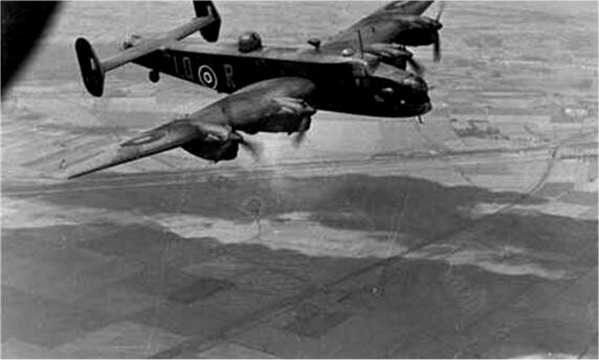
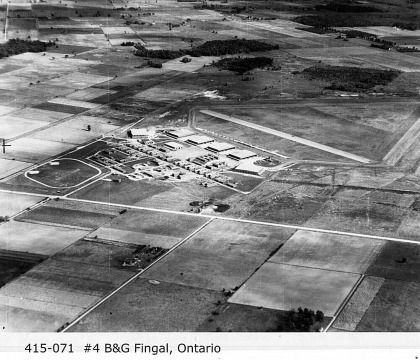 .
.